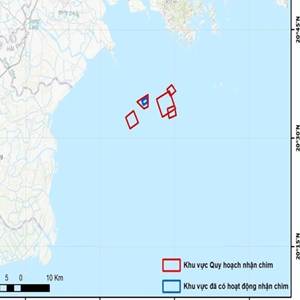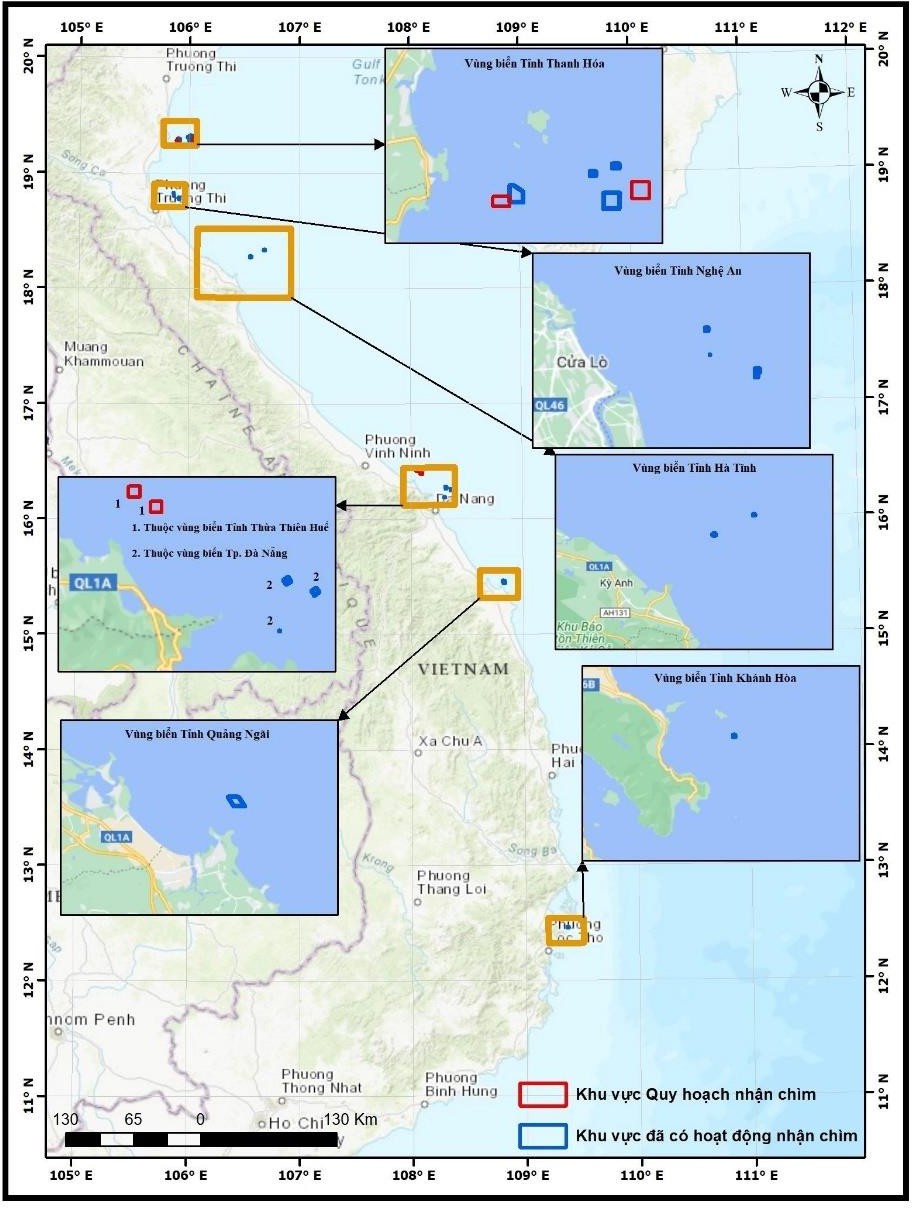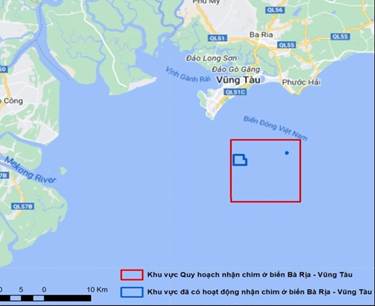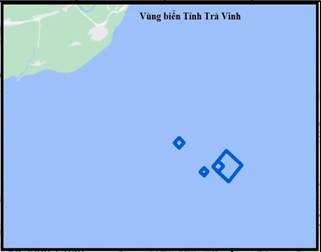

25/07/2025
Dumping at sea is an indispensable part of marine and island environmental protection activities. Many types of waste, such as mud and sand dredged during port construction, channel maintenance, old and broken ships, etc. cannot be dumped on shore but must be dumped at sea. Therefore, dumping at sea has been permitted in legislations internationally and of many countries, including Vietnam.
1. Regulations relating to dumping at sea
1.1. International conventions on dumping at sea
The United Nations Convention on the Law of the Sea 1982, of which Vietnam is a member, stipulates rights and obligations of states in relation to the sea and oceans, including dumping at sea. Accordingly, this Convention defines “Dumping” as: (1) Any deliberate disposal of wastes or other matter from vessels, aircraft, platforms or other man-made structures at sea; (2) Any deliberate disposal of vessels, aircraft, platforms or other man-made structures at sea.
In addition, the issue of dumping is also specifically stipulated in the London Convention 1972 – The Global Convention on the Prevention of Marine Pollution by Dumping of Wastes and Other Matter; the London Protocol to the Convention on the Prevention of Marine Pollution by Dumping of Wastes and Other Matter 1996. In which, it is stipulated that dredged material is allowed to be dumped into the sea based on the fact that this is a material brought up from the seabed, so returning it to the sea is a very natural thing if this material does not contain toxic substances that can change the marine environment in a bad direction.
1.2. Legal regulations of Vietnam on dumping at sea
a) Law on marine and island resources and environment
Articles 57 to 63 of the Law on Marine and Island Resources and Environment stipulate dumping at sea, focusing on following contents: Requirements for dumping at sea; objects and substances permitted to be dumped at sea; Permit for dumping at sea; issuance, re-issuance, extension, amendment, supplement, permission to return, revocation of Permit for dumping at sea; rights and obligations of organizations and individuals granted Permit for dumping at sea; control of dumping activities at sea; dumping outside Vietnam's sea areascausing damage to Vietnam's marine and island resources and environment.
b) Decree No. 40/2016/ND-CP dated 15 May 2016 of the Government detailing the implementation of a number of articles of the Law on Marine and Island Resources and Environment; Decree No. 65/2025/ND-CP dated 12 March 2025 of the Government amending and supplementing a number of articles of Decree No. 40/2016/ND-CP and Decree No. 11/2021/ND-CP dated 10 February 2021 of the Government stipulating the assignment of certain sea areas to organizations and individuals for exploitation and use of marine resources
Articles 49 to 60 of the Decree No. 40/2016/ND-CP dated 15 May 2016 of the Government stipulate contents of issuance, re-issuance, extension, amendment, supplement, permission to return, revocationof Permit for dumping at sea; list of objects and substances permitted to be dumped at sea.
c) Decree No. 57/2024/ND-CP dated 20 May 2024 of the Government stipulating the management of dredging activities in seaport waters and inland waterway waters
Articles 4 to 7 of the Decree No. 57/2024/ND-CP stipulate principles of dredging and dumping; planning of dredged material receiving points; environmental protection during dredging and dumping at sea.
d) Decree No. 37/2022/ND-CP dated 6 June 2022 of the Government amending and supplementing a number of articles of Decrees on sanctioning of administrative violations in national defence, cryptography; management, protection of national borders; in the sea, islands and continental shelf of the Socialist Republic of Vietnam.
This Decree stipulates fines for groups of violations of provisions on dumping objects and substances in Vietnam's sea areas, specifically: Violations in implementing the Permit for dumping at sea; violations of other provisions on dumping objects and substances in Vietnam's sea areas; violations of dumping objects and substances in Vietnam's sea areas without a Permit for dumping at sea in Clauses 14, 15, 16, Article 3, Decree No. 37/2022/ND-CP with fines from VND5,000,000 to VND1,000,000,000.
e) Circular No. 28/2019/TT-BTNMT dated 31 December 2019 of the MONRE (now the MAE) stipulating technical regulations for assessing dredged materials and determining dredged material dumping sites in Vietnam's seaareas; Circular No. 23/2022/TT-BTNMT dated 26 December 2022 of the MONRE amending and supplementing a number of articles of Circular No. 28/2019/TT-BTNMT
The MAE has stipulated contents and steps for assessing dredged materials for dumping; sampling dredged materials (quantity, sampling locations, analysis parameters, etc.); assessing the composition of dredged materials for dumping; contents and steps for determining dumping sites, proposing feasible areas, assessing in detail proposed areas, selecting and determining possible dumping locations, etc.
2. Practice of dumping activities at sea
2.1. Practice of dumping activities at sea in the world and in Vietnam
Dumping of dredged objects and substances at sea in the world as well as in Vietnam is still carried out regularly, serving the maintenance and dredging to ensure the operation of seaports and shipping routes. According to data from the International Maritime Organization (IMO) in 2016, from 1973 to 2010, 44 countries in the world permitted the dumping of about 30 billion tons of dredgedobjects and substances into the sea. The total volume of objects and substances during the above period tended to increase gradually, from 100 million tons/year (1972) to 800 million tons/year (2010). In 2012, China permitted the dumping of about 246 million tons of dredgedobjects and substances (of which about 59.5 million tons were dumped into the East Sea); the US about 55 million tons; the Netherlands about 25 million tons; the UK about 13 million tons. Also, according to the IMO, the volume of dredged materials permitted for dumping at sea accounts for about 80 - 90% of the volume of objects and substances dumped at sea.
Dumping activities at sea have actually taken place in Vietnam before the Law on Marine and Island Resources and Environment was enacted, such as: Dredging to create a path for ships to enter and exit when building Cai Lan port, near Bai Chay bridge area; objects and substances from dredging activities at Lach Huyen transit port, Hai Phong with a total volume of objects and substances dumped of nearly 40 million m3 and implemented according to the request-grant mechanism.
2.2. Current situation of dumping at sea in Vietnam
Along with socio-economic development, the need for dumping, especially dumping dredged materials from shipping channels and ports into the sea in Vietnam has been increasing rapidly in recent times.
The Northern sea area includes provinces of Quang Ninh, Hai Phong, Thai Binh, Nam Dinh, Ninh Binh, all of which have maritime activities, along with the need for dredgingin maritime routes and seaports. Although the need for dredging in maritime routes of the Northern sea area is large, up to nearly 40 million m3, especially in Quang Ninh and Hai Phong areas, up to now, the number of provinces with Permits for dumping dredged materials at sea has only been granted in Hai Phong sea area (3 Permits with a dumping volume of nearly 6 million m3), remaining provinces have chosen the option of dumping dredged materials onshore.

Areas for dumping and planned for dumping dredged objects and substances at sea from Quang Ninh to Ninh Binh

Areas for dumping and planned for dumping dredged objects and substances at sea from Thanh Hoa to Binh Thuan
The North Central sea and Central coastal region include 14 provinces from Thanh Hoa to Binh Thuan, with a total volume of dredging of about 14.7 million m3, of which Thanh Hoa and Ha Tinh provinces are the two areas with the largest dredging demand. According to collected results, from 2016 to present, in the North Central sea and Central coastal region, there are currently 33 Permits for dumping at sea issued by the MONRE (now the MAE) and Provincial People's Committees, calculated from the time the Law on Marine and Island Resources and Environment took effect on 1st July 2016. Dumping of dredged materials at sea is mainly in sea areas of Thanh Hoa province (7/33 Permits), Nghe An (5/33 Permits), Ha Tinh (3/33 Permits), Quang Ngai (3/33 Permits), Quang Nam (1/33 Permits) and Da Nang city (8/33 Permits).
The Southeast sea area includes provinces of Ba Ria - Vung Tau and Ho Chi Minh city. Currently, only Ba Ria - Vung Tau has dredging activities and the need for dumping dredged materials; the volume of dredged materials dumped in this area is over 15 million m3 (7 Permits).
The Southwest sea area includes 7 provinces from Tien Giang to Kien Giang. This is an area with a great need for dredging, especially at seaports of the Duyen Hai Power Center - where the sedimentation rate is high. In this area, about 30 million m3 (12 Permits) of dredged materials has been dumped into the sea of Tra Vinh.
After the Law on Marine and Island Resources and Environment 2015; Decree No. 40/2016/ND-CP and related legal regulations came into effect, the MONRE (now the MAE) issued 45 Permits for dumping about 107 million m3 of dredged materials from ports and channels; local coastal authorities issued about 15 Permits for dumping at sea.
3. Some difficulties and obstacles
In the process of implementing legal regulations on issuing Permits for dumping at sea in Vietnam, there are some difficulties and obstacles as follows:
Firstly, coordination with ministries, sectors and local authorities in the appraisal of dossiers applying forPermits for dumping at sea: During the appraisal of dossiers, the MAE issues documents requesting opinions from the Ministry of Construction, Ministry of National Defence and Provincial People's Committees. However, the time to respond to documents from ministries is often slower than the time prescribed in Decree No. 40/2016/ND-CP dated 15 May 2016 of the Government.

Areas for dumping and planned for dumping dredged objects and substances at sea from Ba Ria - Vung Tau to Ho Chi Minh city

Areas for dumping and planned for dumping dredged objects and substances at sea from Tien Giang to Kien Giang
Secondly, according to provisions of Clause 2, Article 7, Decree No. 57/2024/ND-CP, Provincial People's Committees shall prepare, announce, and publicly post a list of areas and locations for dumping dredged materials at sea, including sea areas beyond 6 nautical miles on their portal/website and at the headquarter according to the form prescribed in the attached Appendix. However, currently, very few localities are able to implement aboveprovisions.
Thirdly, provisions of the Law on Marine and Island Resources and Environment; Decree No. 40/2016/ND-CP dated 15 May 2016 of the Government have many shortcomings.
Duration of the Permit for dumping at sea: According to provisions of Clause 2, Article 59 of the Law on Marine and Island Resources and Environment, the duration of the Permit for dumping at sea is not more than 2 years and can be extended once but not more than 1 year. In reality, the dumping of dredged materials for maintenance of shipping routes and seaports usually takes place annually, therefore, above provisions on the duration of the Permit for dumping at sea will lead to organizationsand individuals having to apply for a Permit for dumping at sea every year or every 2 years.
Appraisal process: The Law on Marine and Island Resources and Environment stipulates that the MAE and Provincial People's Committees are competent authorities to issue the Permit for dumping at sea. However, procedures for issuance, re-issuance, extension, amendment, supplement, permission to return of the Permit for dumping at seastipulate a common process for the MAE and Provincial People's Committees. This causes difficulties for local authorities with inconsistent appraisal methods (some local authorities ask for opinions from departments and sectors; some local authorities hold appraisal meetings; some local authorities establish appraisal councils, etc.).
Methods of dossier appraisal: According to Clause 2, Article 57, Decree No. 40/2016/ND-CP dated 15 May 2016 of the Government, the dossier appraisal is carried out by the dossier receiving agency, if necessary, opinions of relevant agencies and on-site inspection are sought. However, in practice, the appraisal of dossiers applying for a Permit for dumping at sea requires opinions of domestic and foreign scientists and experts.
Technical provisions on dumping at sea: The sea area for dumping is mostly near-shore sea area (sea area from 3 nautical miles to 24 nautical miles from the coast). According to QCVN 10:2023/BTNMT - National technical regulation on seawater quality in near-shore areas, there is a lack of some specific parameters to assess and monitor the quality of the seawater environment in the dumping area (for example, total suspended solids TSS parameter).
Charges for issuing a Permit for dumping at sea: According to the Law on Fees and Charges, the Law on Marine and Island Resources and Environment stipulates that organizations and individuals who are granted a Permitfor dumping at sea must pay charges for issuing a Permitfor dumping at sea. However, the appraisal process to issue a Permit must go through many steps such as on-site surveys, inviting appraisal experts, etc. Therefore, it is recommended that the competent authority adjust provisions to collect appraisal charges to partially offset the budget expenditure for the appraisal of applications for a Permit for dumping at sea.
Fourthly, the examination and supervision mechanism during the dumping process has not been clearly defined, with the project owner being responsible for implementation or independent supervision conducted by state management agencies; equipment for examination and supervision, human and financial resources for marine environmental supervision activities are still lacking and weak; the supervision of the itinerary and volume depends on the local port authority.
4. Proposed solutions for the coming time
In order for activities of dumping at seain Vietnam to be truly effective, in the coming time, the Department of Agriculture and Environment of coastal provinces and cities need to advise the Provincial People's Committee to prepare, announce, and publicly post a list of areas and locations for dumping dredged materials at sea according to current regulations, as a basis for implementation at the same time as preparing, announcing, and publicly posting the list and dumping points, facilitating local authorities to seek opinions from relevant ministries, sectors and have a dossier to send to the MAE for consideration.
In 2024, the MONRE completed the summary of the implementation of the Law on Marine and Island Resources and Environment, and submitted Report No. 303/BC-BTNMT dated 31 December 2024 to the Government. Implementing the Government's direction, the MAE is currently presiding over and coordinating with relevant ministries, sectors and local authorities to propose amendments and supplements to the Law on Marine and Island Resources and Environment in accordance with provisions of the Law on Promulgation of Legal Documents, and reports to the Government for consideration and decision. The Viet Nam Agency of Seas and Islands has compiled and is considering amending and supplementing a number of contents such as: Duration of the Permit to suit reality; Regarding the appraisal process for issuing a Permit for dumping at sea, study to integrate contents of 02 sets of documents: (1) Project for dumping at sea, and (2) Environmental impact assessment report into one set of documents to be submitted to the competent authority for consideration and appraisal in order to create favourable conditions, reduce administrative procedures, and create motivation for businesses, organizations, individuals... In addition, it is recommended that the Government includesprovisions on paying charges for issuing a Permit for dumping at sea in the list of the Law on Fees and Charges.
Regarding technical provisions on dumping at sea: The sea area for dumping is mostly near-shore sea area (sea area from 3 nautical miles to 24 nautical miles from the coast) and the examination and supervision mechanism during the dumping process. Currently, the Vietnam Agency of Seas and Islands has the plan to develop a national technical regulation on seawater quality in dumping activities and the process of supervision of the implementation of dumping activities at sea.
Nguyễn Thị Minh Hải
Nguyễn Trần Liêm
Ministry of Agriculture and Environment
(Source: The article was published on the Environment Magazine by English No. II/2025)